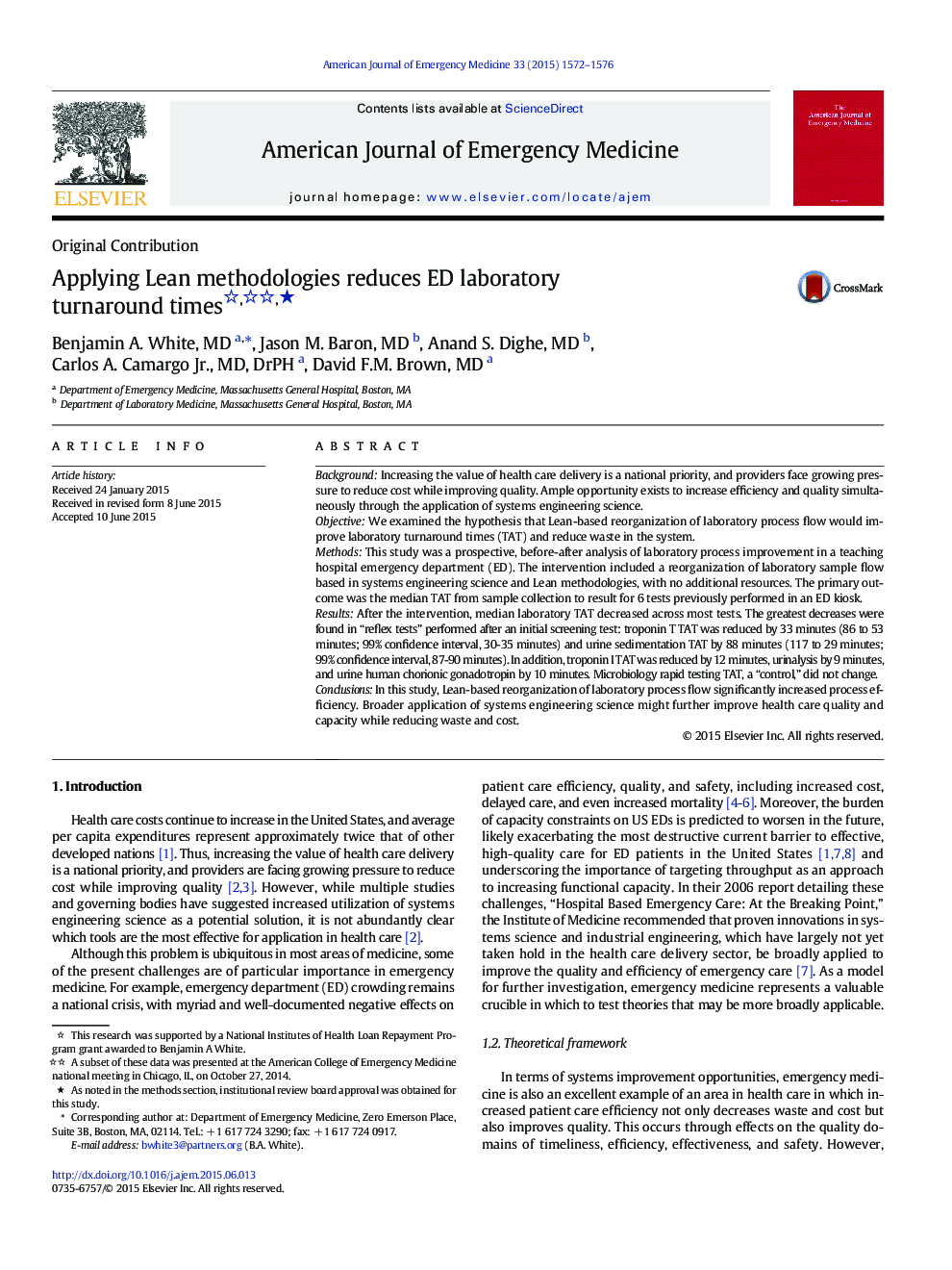| Article ID | Journal | Published Year | Pages | File Type |
|---|---|---|---|---|
| 3223638 | The American Journal of Emergency Medicine | 2015 | 5 Pages |
BackgroundIncreasing the value of health care delivery is a national priority, and providers face growing pressure to reduce cost while improving quality. Ample opportunity exists to increase efficiency and quality simultaneously through the application of systems engineering science.ObjectiveWe examined the hypothesis that Lean-based reorganization of laboratory process flow would improve laboratory turnaround times (TAT) and reduce waste in the system.MethodsThis study was a prospective, before-after analysis of laboratory process improvement in a teaching hospital emergency department (ED). The intervention included a reorganization of laboratory sample flow based in systems engineering science and Lean methodologies, with no additional resources. The primary outcome was the median TAT from sample collection to result for 6 tests previously performed in an ED kiosk.ResultsAfter the intervention, median laboratory TAT decreased across most tests. The greatest decreases were found in “reflex tests” performed after an initial screening test: troponin T TAT was reduced by 33 minutes (86 to 53 minutes; 99% confidence interval, 30-35 minutes) and urine sedimentation TAT by 88 minutes (117 to 29 minutes; 99% confidence interval, 87-90 minutes). In addition, troponin I TAT was reduced by 12 minutes, urinalysis by 9 minutes, and urine human chorionic gonadotropin by 10 minutes. Microbiology rapid testing TAT, a “control,” did not change.ConclusionsIn this study, Lean-based reorganization of laboratory process flow significantly increased process efficiency. Broader application of systems engineering science might further improve health care quality and capacity while reducing waste and cost.
